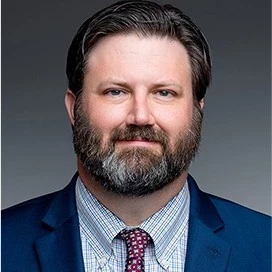Training Myopia: Are We Really in the Wealth-Creation Business?
Add bookmarkEditor's Note
Peter F. Drucker coined the term "knowledge worker" more than 60 years ago. At that time, very few people understood the importance of Drucker's observation relating to the economic and societal impact of knowledge work in its various forms.
Knowledge workers–by some estimates–comprise over 48% of America's workforce. Knowledge workers from digital marketers to neurosurgeons are now the chief asset of most organizations.
Knowledge workers apply knowledge (and experience) to their daily tasks. Drucker pointed out that a very large number of knowledge workers do both knowledge work and skilled manual work (they work with their hands).
A neurosurgeon requires specialized knowledge of the highest order but the surgery itself can be classified as manual work. Similarly, a person repairing jumbo jets works with his/her hands but is applying knowledge rather than just skill.
Simply put, Drucker distinguished between knowledge workers doing just knowledge work and knowledge workers who apply knowledge of the highest order simultaneously using the skill of their hands.
Drucker called the second group of knowledge workers "technologists." Technologists also contain large numbers of people in whose work knowledge is relatively subordinate – though essential to job performance (e.g., x-ray technicians).
Knowledge workers and technologists of all kinds are really today's capitalists. Why? Because the bulk of knowledge workers truly own the means of production because their pension funds, mutual funds 401(k)s and the like are invested in large part in ongoing businesses of all kinds and sizes.
Never before have there been such enormous pools of money held by institutional investors primarily for employee pension funds. Drucker called this "pension fund socialism." (We will discuss this in future articles).
Take-for example-the American Association of Retired People (AARP), whose approximately 38 million members represent through their pension fund holdings one of the largest blocks of ownership in America's industries.
Anything that negatively impacts American businesses could impact future retirement incomes. Likewise, anything that positively impacts American businesses, that is, increases its wealth producing capacity, improves middle-class life, middle-class culture and middle-class values.
It's important to keep all this in mind as you read through this article. Internal training organizations (ITOs) have an important role–much more important than initially realized–in maintaining and increasing the wealth producing capacity of their respective organizations.
Introduction
Back in the 60s, an article in the Harvard Business Review by Ted Levitt, then distinguished professor of marketing at the Harvard Graduate School of Business, made a tremendous impact on senior level executives. It was titled Marketing Myopia.
Levitt said some very important things in this article. Chief among them was that most company managements were looking at their businesses with tunnel vision that he called marketing myopia (or nearsightedness).
His premise was people in the airline business or railroad business should broaden their perspectives to realize that they were actually in the transportation business.
What their customers wanted was to be moved from one location to another by some affordable, efficient means of transportation and they didn't really care whether the vehicle was a plane, a train, a bus or a car.
Levitt implicitly implied that before an organization broadens its vision, it must be sure it has or can acquire the core competencies or specific knowledges required for success if they adopt a broader view of their business.
Product-Oriented Vs Market-Oriented
Management should avoid a market definition that is too narrow or broad. Marketing guru Philip Kotler provided the following illustration in an early edition of his classic textbook on Marketing Management:
"Consider a lead-pencil manufacturer… If it sees itself as a writing instruments company, it might expand into the production of pens…
… If it sees itself as a writing-equipment company, it might consider making word processors {including computer voice dictation systems such as Dragon Dictate}… The broadest concept of its business is that of a communications company, but this would be stretching things too far..."
Because of Levitt's article, many organizations looked beyond their specific products and/or services and attempted to define the specific value they were providing to their customers.
As a result, organizations selling, say, short courses for professional, managerial and technical workers decided they were in the knowledge worker productivity improvement business; oil companies redefined themselves as natural energy companies; watch/clock manufacturers redefined themselves as being in the time business (this opened up their horizons to oven clocks, vault timers and the like).
Encyclopedia Britannica redefined themselves as being in the information distribution business; Carrier changed from defining their business as making air conditioners and furnaces to providing climate control in the home; Missouri-Pacific Railroad reinvented themselves by defining themselves as "a people-and-goods mover," and so on.
How Does This Apply to ITOs?
For starters, those of us involved with the internal training function would be better served if we stopped thinking we’re in the training/learning business and started realizing we are in the business of creating corporate wealth, instead.
A possible business purpose definition for ITOs could very well be something like: “We are global knowledge brokers, that is, we transfer knowledge, skills and best practices throughout the world to continuously improve employee/organizational productivity and spur innovation.”
How Does an Organization Create Wealth?
Businesses of all kinds and sizes must be managed for wealth creation. Key drivers of wealth creation are innovation and continuous productivity improvement.
Said Drucker, "We now know that the source of wealth is something specifically human: knowledge. If we apply new knowledge (methodologies) to tasks we already know how to do, we call it 'productivity.' If we apply knowledge to tasks that are new and different, we call it' innovation.' Only knowledge allows us to achieve these two goals."
It's the job of the ITO to provide the right knowledge to knowledge workers to achieve successful innovation and continuous productivity improvement.
Indeed, the realization that knowledge is the major source of wealth has major implications. Karl Marx's (a German philosopher and revolutionary socialist) so-called labor theory of value is based on the belief that labor is the creator of wealth.
But Drucker, among others, have written extensively about why humans must be equipped with the thinking, knowledge and skills to apply that knowledge before wealth can be created.
Properly viewed, businesses will thrive and survive only if its knowledge workers are up to speed.
According to Drucker, "Since it’s impossible, according to the laws of statistics, for any but the smallest organization to have' better people,' the only way an organization in a knowledge-based economy can excel is through getting more out of the same kind of people; that is, through managing (and making capable) its knowledge workers for greater [innovation and] productivity…"
Once this is understood by senior-level management and by the training function itself, the role of learning and development could be greatly expanded because systematic knowledge acquisition and continuous learning is the key the competitive advantage.
See more about continuous learning in “Hey Christine.”
Changing Senior-Level Mindsets About Training Expenditures
Many senior-level managers still think of employees as a cost rather than an asset. Costs must be controlled. Assets must be grown.
In talking to dozens of ITO chieftains, we were surprised to learn many senior-level executives are increasingly concerned about investing significant training dollars into employee development because of fears of employee turnover.
Apparently, the following old adage has suffered from the law of slow learning and fast forgetting: “When a cynic asks,' What if we train them and they leave?' winning organizations respond: 'what if we don't train them and they stay?"
The Role of ITOs in Enabling Wage Increases Accompanied by the Appropriate Productivity Increases
Productivity will be a major challenge and a major concern in the years just ahead.
Productivity, we all heard a good many times by now, is the key to managing the inflation Warren Buffett and many others believe could occur if America does not whittle down its yearly deficits and its accumulated $22 trillion public debt while simultaneously increasing worker productivity.
To have price stability, wages must not rise faster than productivity. A simple, equation formulated by C. Jackson Grayson Jr, former pricing commissioner/czar during the Nixon administration, explains this quite well:
Wage Increases - Productivity Increases = Price Increases
For example, if wages increase by 10% and productivity increases by 3%, then prices would increase by 7%.
The bulk of today's knowledge worker jobs are in service trades and knowledge jobs—in health care, government, management, research, quality and the like. We’re learning how to define, measure and improve the productivity of knowledge work.
Many businesses define productivity as the ratio of revenues/costs. If revenues are decreasing for businesses, colleges and universities, government agencies, and many other institutions, organizations must, then, reduce costs (eliminate fat not muscle) to adjust for decreases in revenues.
But there is also a cost squeeze on most institutions due, in part, to lagging productivity of knowledge workers. (We will discuss achieving more with less, that is, improving productivity in a future article).
A Simple Example
Let's give an example taken from today's front-page news. In a recent article by Aaron Colen in theBlaze revealed the following facts:
"Some New Yorkers are displeased with one of the more predictable outcomes of a $15 minimum wage—restaurants all over the city are raising their prices, according to the New York Post...
The city's minimum wage went up to $15 from $13 or $13.50 at the beginning of 2019, boosting the paychecks for numerous lower-wage workers…
…Those who rely on restaurants regularly for their daily lunches, however, aren't as happy.…
'It's obnoxious—kind of a slap in the face’ Starbucks patron Edward Beck told the Post. 'Another increase, and I won’t come back.'…"
The remainder of Colen's article details why the traditionally thin profit margins in many restaurants are causing some to close and others to significantly raise their prices. However, instead of blaming the politicians who take credit for the minimum wage increase, people are blaming the restaurants for price gouging.
Our point? The key to managing inflation, that is, to have price stability, is that wages must not rise faster than productivity. (Just as illustrated in the above equation).
ITOs through management development, workforce development, manager development and more are, hopefully, increasing the productivity of the knowledge-based workforce.
From both a societal and economic perspective, this enables real wage increases (increases not eliminated through inflation) and produces more societal wealth.
In Summary
Innovation and productivity improvement are the key drivers of success/wealth creation in any organization. What can ITOs do to increase organizational innovation and productivity improvement?
Perhaps it's fitting to conclude this article with The Parable of the Three Stonecutters often quoted and/or coined by Peter F. Drucker:
"Asked what they were doing,
– The first replied, 'I am making a living.'
– The second replied with, 'I am doing the best job of stone cutting in the country.'
– The third replied, 'I am building a cathedral.'
The third person is, of course, the true 'manager.'
The third person inspires others to provide greater contribution and commitment…”
































